In this article:
Back spasms are incredibly painful. They can be very annoying as they can interfere with your daily life and activities.
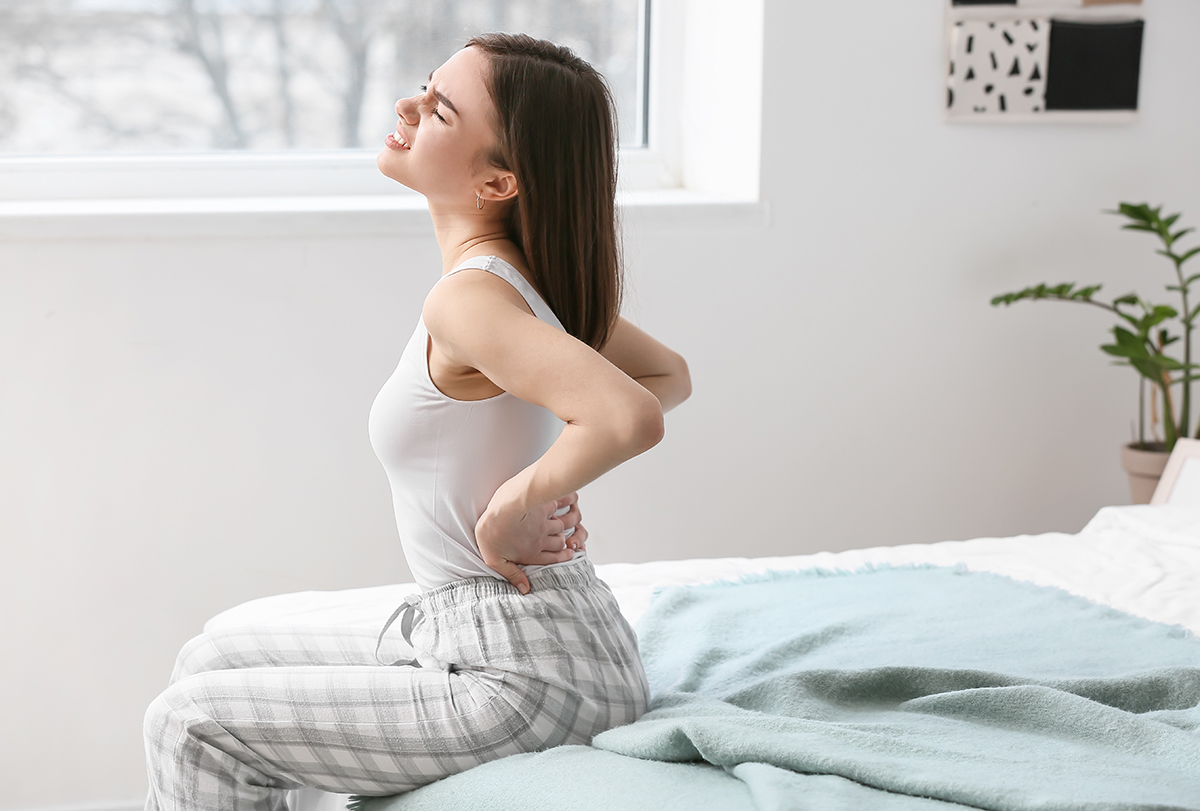
The worst thing about back spasms is that they happen very suddenly, leaving the person in a lot of uncontrollable pain. (1)
In the year 2019, a report by CDC indicated that 39.0% of adults experienced back pain, 36.5% reported lower limb pain, and 30.7% experienced upper limb pain within the last three months. (2)
The major reason for back spasms is usually an injury such as a strained muscle, but it also happens during pregnancy or when you are dehydrated. Leading a sedentary lifestyle and not being very physically active contribute to back spasms as these weaken the back muscles.
In certain cases, medical conditions such as a slipped disc, sciatica (a pinched nerve), or ankylosing spondylitis can also lead to back spasms. (3)
The good news is that they can be treated. There are also remedies and various lifestyle changes that can aid you in recovering from back spasms. These remedies can lower the intensity of your pain or at least the frequency of your back spasms.
How to Get Rid of Back Spasms
Here are some ways to handle back spasms.
1. Maintain proper fluid intake
As mentioned above, dehydration can be a potential cause of back spasms. Not having enough water can pave the way to more frequent spasms or the worsening of existing ones.
It is also important to replenish with enough electrolytes, so you may consider shifting to a rehydration solution or juices. (4)
2. Go swimming
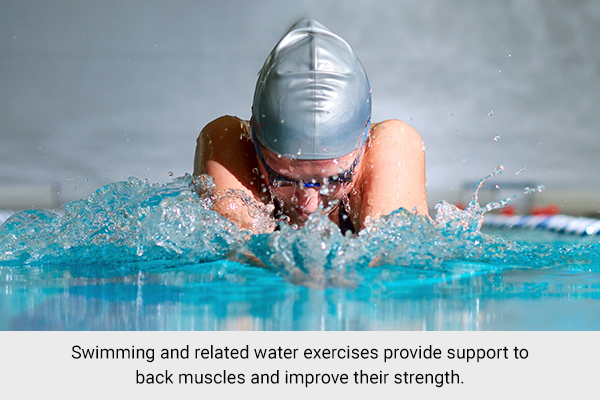
Swimming and related water exercises provide support to the back muscles and improve their strength, making them great ways of preventing back pain.
To enjoy the benefits of swimming for your back health, you should, however, make sure you’re performing it correctly. If possible, do it under the supervision of an instructor for the first few times until you finally get a hang of it. (5)
3. Perform stretches
The following stretching exercises can help in reducing muscle tension and spasms in your back. (6)
Hip lifts
To perform hip lifts, you have to first lie down on your back, face up. Make sure you bend your knees and your feet touch the ground. Easily place your hands by your side and raise your hips a little off the ground. Hold this position for a few seconds and repeat it five times. (7)
Child’s pose
The child’s pose is a very famous yoga pose where you kneel on the ground, making sure your knees are a few inches apart, touching the mat. Stretch up your chest and slowly go back down, all while going closer to your thighs. Keep your hand in front of your head, and stretch them outward. (8)
4. Perform temperature therapy
Applying either heat or cold compresses to your back when experiencing a spasm helps manage pain and reduce inflammation. It also decreases tension in your muscles.
You can change between hot and cold compresses instead of going for only one. This means you can start by applying a hot compress for the first few minutes and then shift to a cold pack with a short break in between.
Do not apply hot or cold compresses directly to your skin, but first wrap them in a cloth to avoid any skin or tissue injury. (9)
5. Do massage therapy
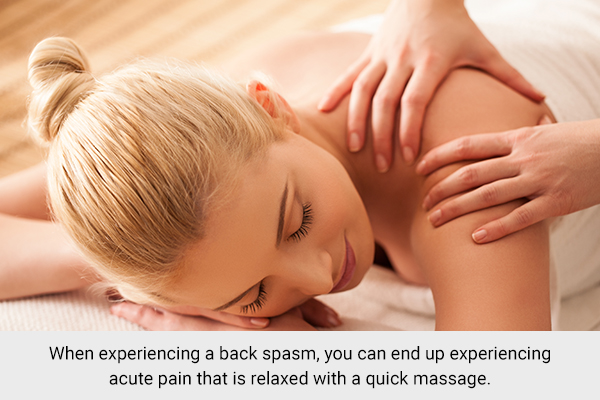
When experiencing a back spasm, you can end up experiencing acute pain, which can be relieved with a quick massage. Applying a little pressure to the affected area helps stop the spasms.
To get the soothing action of a massage, just apply some tension for a minute while rubbing the area in circular motions.
Make sure to not apply a lot of pressure but only a firm tension. Also, do not apply pressure if you feel a pulse in the affected area. (10)
6. Take short periods of rest but not too much
A painful back muscle spasm may hinder your daily activities or movement. Attempting to power through the pain can cause more harm and slow down recovery. Instead of pushing yourself, it’s better to rest, say experts.
Take a day off and relax at home, but don’t forget to move around a bit. Short walks are a good option as they promote blood flow and help the healing process, while prolonged inactivity can cause muscle stiffness and worsen the pain.
Walking is generally gentle on your back and can speed up your recovery.
One study showed that among young and motivated patients, resting in bed for 3 days provided the same level of improvement in trunk function and pain rating as resting for 7 days. Therefore, the shorter duration of bed rest is a better option as it provides similar objective results while also offering physiological and economic benefits. (11)
7. Improve your posture
One study suggests that faulty postures, including scoliosis, and non-ergonomic work-related tasks increase the probability of back pain, which can lead to several conditions.
One way to prevent back spasms and reduce the risk of developing back pain syndromes is to improve body posture.
This can be achieved by being mindful of your posture throughout the day, taking frequent breaks to stretch and move, using ergonomic equipment, strengthening core muscles, and regularly stretching. (12)
ALSO READ: How to Improve Your Posture to Avoid Back Pain
8. Warm up before exercising
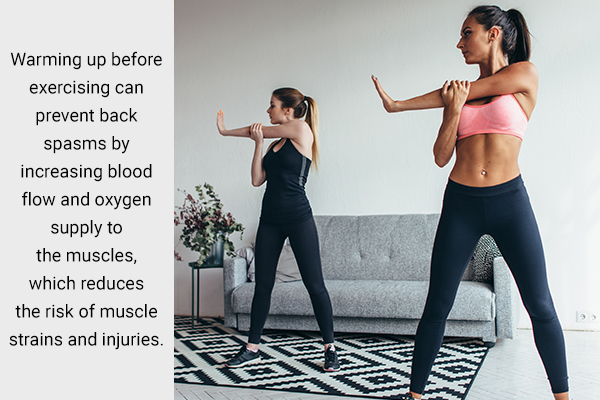
Warming up before exercising can prevent back spasms by increasing blood flow and oxygen supply to the muscles, which reduces the risk of muscle strains and injuries.
A proper warmup routine can help loosen stiff muscles, increase range of motion, and prepare the body for physical activity, including exercises that put a strain on the back muscles.
By increasing muscle temperature and flexibility, warmups can improve posture, balance, and coordination, which can further reduce the risk of back spasms.
Additionally, warming up can increase psychological readiness for physical activity, which can also help prevent muscle strains and injuries.
However, it’s important to note that warmups should be tailored to individual needs and fitness levels to be effective in preventing back spasms and other injuries. (13)
9. Maintain a healthy weight via the right diet and proper exercise
If you’re overweight, you increase the stress on your spine and joints. Implementing diet changes and regular exercise can help you to manage weight and thus prevent stress on your back as well. (14)
People who consume a diet that is not rich in whole grains can be more prone to experiencing back spasms. (15) Since spasms are known to cause inflammation, food rich in anti-inflammatory substances can be a good option for resolving back spasms. (16)
Experts advise to include these foods in your diet:
- Green leafy vegetables
- Fruit
- Yogurt
- Turmeric
- Ginger
- Green tea
Performing regular aerobic exercises helps maintain your physical health and overall fitness. Such a routine enables healthier muscles and lower cases of back spasms.
You can base the type of exercise you do on your comfort level. (17)
10. Take regular walks
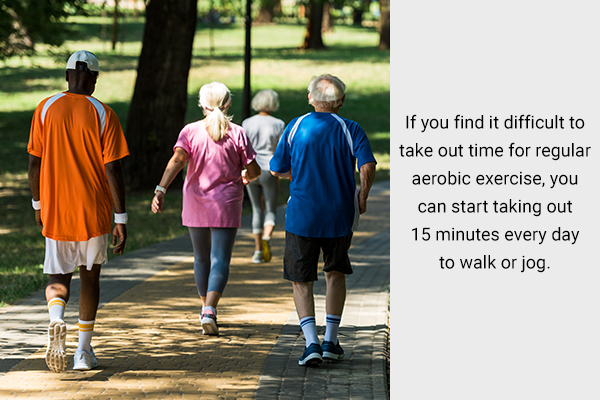
If you find it difficult to take out time for regular aerobic exercise, you can walk or jog for just 15 minutes every day.
You can start walking to the metro or bus stations instead of taking your car. This requires no external help and is an effective way of managing back spasms. (18)
11. Seek medical treatment
Over-the-counter medications called nonsteroidal anti-inflammatory drugs (NSAIDs) are great at managing spasms after a few minutes if not instantly.
Some medicines that relax the muscles are available to manage back spasms, but these are commonly prescribed by doctors for extreme and prominent spasms. These medications cannot be bought without a prescription, unlike NSAIDs. (19)
According to experts, the majority of back problems can be managed using medications and physical activity. However, in some uncommon cases where these options fail to work, surgery may be required.
The type of surgery depends upon the root cause of your issue, which can be determined after a thorough examination of your condition.
When to See a Doctor
Experts recommend that you see a doctor if:
- The back spasm is becoming more intense or persistent.
- Treating the back spasm at home for several weeks does not result in improvement.
- The back spasm is hindering your ability to carry out daily activities.
- Coughing or sneezing exacerbates the pain from the back spasm.
- You are experiencing a fever and chills alongside back spasms.
- Gastrointestinal symptoms are present, such as localized abdominal tenderness or peritonitis.
Most-Asked Questions About Back Spasms
What are rollers for back spasms?
Rollers made of foam are used to relieve spasms. You can roll them on your back to relax muscle tension. Make sure you use it firmly and lightly; being too heavy with it can lead to injuries. (20)
What are some symptoms of back spasms?
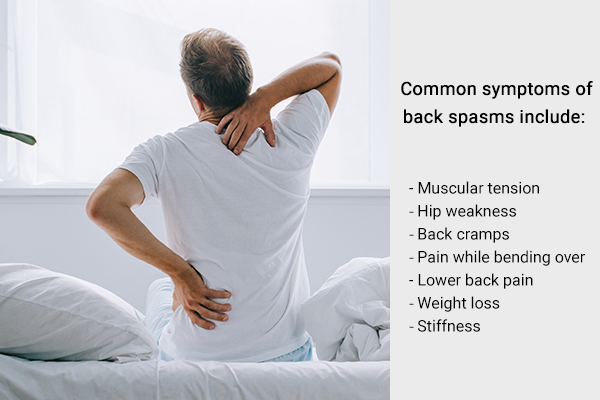
A few common symptoms of back spasms may include: (1)
- Muscular tension
- Hip weakness
- Back cramps
- Pain while bending over
- Lower back pain
- Weight loss
- Stiffness
How are acute lower back spasms different from chronic ones?
Acute back spasms happen suddenly. They can occur when you’re lifting something heavy or change your position in an instant. They are more intensive in pain severity.
Chronic lower back spasms, on the other hand, occur on a somewhat regular basis. They may be a result of a back injury. (21)
Will taking a bath with Epsom salt improve back spasms?
The historical use of Epsom salt, which contains magnesium sulfate, for the treatment of muscle strains suggests that it may have some therapeutic effects on muscle-related conditions, including back spasms.
Additionally, modern medicine widely uses magnesium for the prophylaxis and treatment of pain, indicating that magnesium may have potential benefits for individuals experiencing back spasms.
While further scientific research is needed to establish the effectiveness of Epsom salt baths specifically for back spasms, the historical and contemporary uses of magnesium suggest that it may be a useful tool for managing muscle pain and tension, including those associated with back spasms. (22)
Can I use a back support while sitting?
Experts say that using a back support while sitting can be beneficial for individuals experiencing back spasms, as it helps to maintain proper posture and reduce strain on the back muscles.
Final Word
Back spasms cause intense pain and increased muscle tension in the affected area. They are caused by the sudden contraction of muscles. The pain can sometimes be light and only pinching. They are usually felt in the lower back area more prominently.
This uncontrolled pain can later develop into leg or hip pain. So, it is important to learn how to manage them to avoid complications and have a good quality of life.
- Was this article helpful?
- YES, THANKS!NOT REALLY


